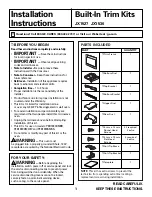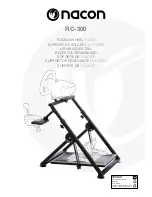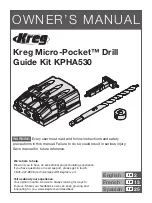
44
TK 61555-2-MM-EN
Antifreeze Maintenance Procedure
As with all equipment containing antifreeze, periodic inspection on a regular basis is required to
verify the condition of the antifreeze. Inhibitors become worn out and must be replaced by
changing the antifreeze. Change ELC (red) engine coolant every five years or 12,000 hours
(whichever occurs first).
Do not mix green or blue-green engine coolant with ELC (red) engine coolant. See “Extended Life
Coolant (ELC)” for more information about ELC.
The factory recommends the use of a 50/50 antifreeze mixture in all units even if they are not
exposed to freezing temperatures. This antifreeze mixture will provide the required corrosion
protection and lubrication for the water pump.
Checking the Antifreeze
Check the solution concentration by using a temperature compensated antifreeze hydrometer or
a refractometer (P/N 204-754) designed for testing antifreeze. Maintain a minimum of 50 percent
permanent type antifreeze concentrate and 50 percent water solution to provide protection to -30
F (-34 C). Do not mix antifreeze stronger than 68 percent permanent type coolant concentrate and
32 percent water for use in extreme temperatures.
Changing the Antifreeze
1.
Run the engine until it is up to its normal operating temperature. Stop the unit.
C
CA
AU
UT
TIIO
ON
N
R
Riisskk o
off IIn
njju
urry
y!!
A
Av
vo
oiid
d d
diirre
ecctt cco
on
ntta
acctt w
wiitth
h h
ho
ott cco
oo
olla
an
ntt..
2.
Open the engine block drain and completely drain the coolant. Observe the coolant color. If
the coolant is dirty, proceed with steps a, b, and c. Otherwise proceed to step 3.
a.
Run clear water into the radiator and allow it to drain out of the block until it is clear.
b.
Close the block drain and install a commercially available radiator and block flushing
agent, and operate the unit in accordance with instructions of the flushing agent
manufacturer.
C
CA
AU
UT
TIIO
ON
N
R
Riisskk o
off IIn
njju
urry
y!!
A
Av
vo
oiid
d d
diirre
ecctt cco
on
ntta
acctt w
wiitth
h h
ho
ott cco
oo
olla
an
ntt..
c.
Open the engine block drain to drain the water and flushing solution.
3.
Run clear water into the radiator, and allow it to drain out of the block until it is clear.
4.
Inspect all hoses for deterioration and hose clamp tightness. Replace if necessary.
5.
Inspect the radiator cap. Replace the cap if the gasket shows any signs of deterioration.
6.
If using ELC concentrate, mix one gallon of ELC concentrate and one gallon of de-ionized or
distilled water in a container to make a 50/50 mixture (Do not add antifreeze and then water to
the unit. This procedure may not give a true 50/50 mixture because the exact cooling system
capacity may not always be known).
7.
Refill the radiator with the 50/50 antifreeze mixture and verify to bleed the air from the
cooling system as needed.
Bleeding Air from the Cooling System
Jiggle pin thermostats are original equipment on units that have engines from the TK486 family
of engines. Jiggle pin thermostats make it unnecessary to bleed the air out of the engine block
because they keep air from being trapped in the engine block. Normally, all but about 1.5 qt (1.4
liters) of coolant drain out of the cooling system when it is drained. If approximately half of the
Cooling System Capacity (see Specifications Chapter) seems to fill the cooling system after it has
been drained, air has been trapped in the block. Bleed the air out of the block using the following
procedure:
















































